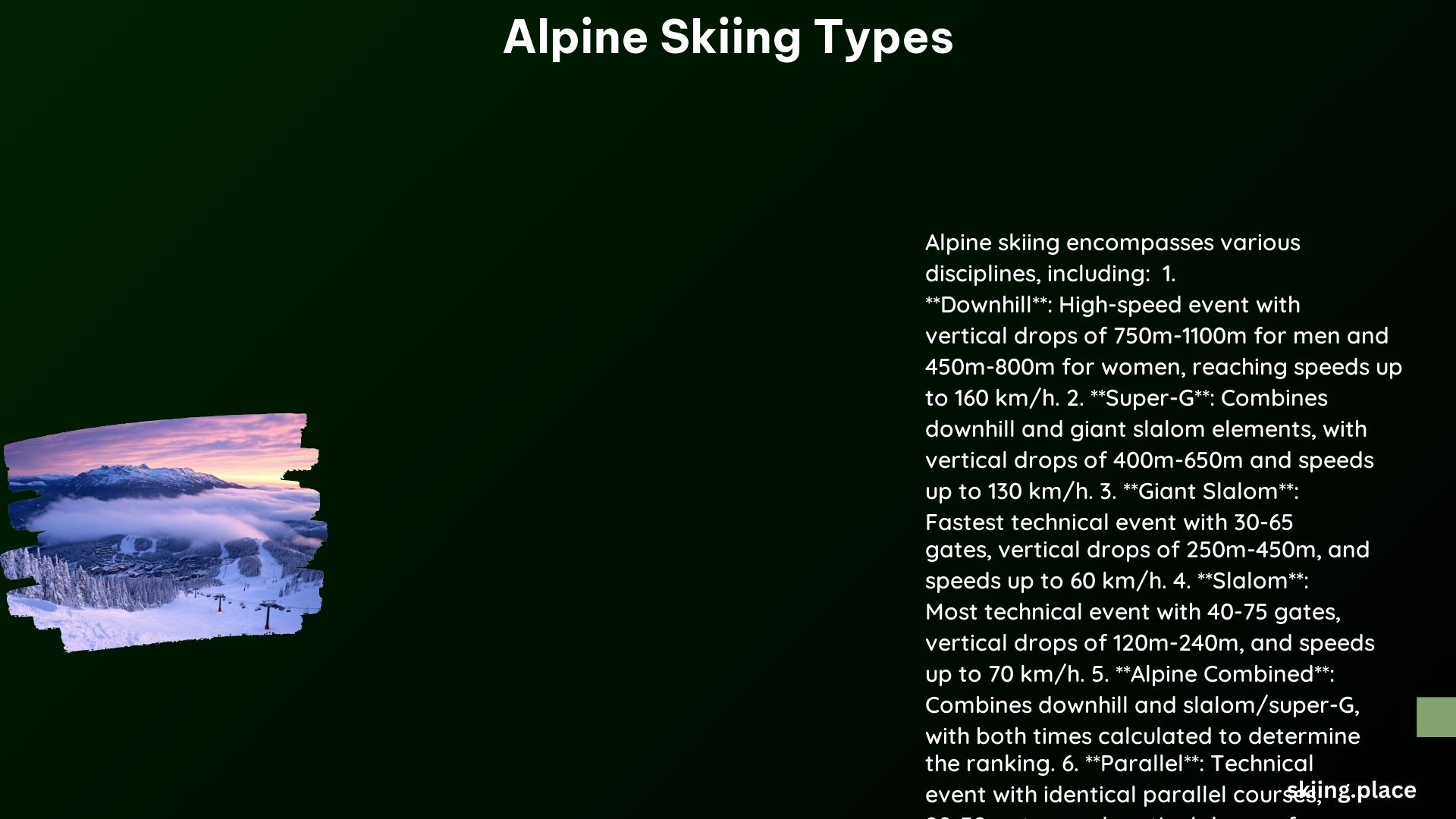Alpine skiing encompasses several sub-disciplines, each with its unique characteristics and requirements. Among enthusiasts, downhill skiing is the most popular type, often referred to as “speed skiing” due to its high-speed nature. Downhill skiing involves skiing down a steep, long course with few turns, requiring exceptional speed, control, and courage.
What is the Difference Between Downhill Skiing and Slalom Skiing?
Downhill skiing and slalom skiing are two distinct types of Alpine skiing that differ significantly in terms of technique, course layout, and equipment:
Technique
- Downhill Skiing: Involves maintaining high speeds and navigating through a few, wide turns. Skiers use a more aggressive stance and focus on maintaining control and speed.
- Slalom Skiing: Involves quick, precise turns around closely spaced gates. Skiers use a more agile and dynamic technique, with rapid edge-to-edge transitions.
Course Layout
- Downhill Courses: Longer, with fewer turns and a more straightforward layout. Designed to allow skiers to reach high speeds.
- Slalom Courses: Shorter, with more turns and tighter gate spacings. Designed to test skiers’ agility and quick reflexes.
Equipment
- Downhill Skis: Longer and stiffer, with a more pronounced sidecut to facilitate high-speed turns. Bindings are also designed for high-speed performance.
- Slalom Skis: Shorter and more agile, with a tighter sidecut to enable quick turns. Bindings are designed for precision and responsiveness.
Who is Considered the Best Alpine Skier of All Time?

Ingemar Stenmark is widely regarded as the best alpine skier of all time. He holds the record for the most World Cup wins overall, with an impressive 86 victories. Stenmark’s achievements span multiple disciplines, including downhill, slalom, and giant slalom. His dominance in the sport during the 1970s and 1980s earned him legendary status, and he remains an iconic figure in Alpine skiing.
What is the Historical Context of Alpine Skiing?
- Downhill skiing debuted in the Winter Olympics in 1924 in Chamonix, France, with Nordic and jumping events.
- The X Games include newer events like slopestyle and ski superpipe, which have become popular among freestyle skiers.
- Alpine skiing has evolved significantly over the years, with advancements in equipment and technology contributing to its growth in popularity.
What are the Different Types of Alpine Skiing?
In addition to downhill and slalom skiing, there are several other types of Alpine skiing:
| Type | Description |
|---|---|
| Giant Slalom | Involves longer, more widely spaced gates than slalom, requiring a balance of speed and precision. |
| Super-G (Super Giant Slalom) | A high-speed event that combines elements of downhill and giant slalom, with longer, more widely spaced gates. |
| Freestyle Skiing | Includes events like slopestyle, halfpipe, and big air, where skiers perform acrobatic tricks and jumps. |
| Ski Jumping | A discipline where skiers launch themselves off a specially designed ramp, aiming for distance and style. |
| Nordic Skiing | Encompasses cross-country skiing and ski jumping, which are distinct from Alpine skiing. |
What are the Advancements in Alpine Skiing Equipment and Technology?
Over the years, Alpine skiing equipment and technology have evolved significantly, contributing to the sport’s growth and performance:
- Ski Design: Skis have become shorter, wider, and more shaped, improving stability, edge grip, and maneuverability.
- Bindings: Advancements in binding technology have enhanced safety and responsiveness, allowing skiers to transfer power more efficiently.
- Clothing and Accessories: Specialized ski apparel, including jackets, pants, and goggles, have improved insulation, breathability, and aerodynamics.
- Ski Waxing and Tuning: Advancements in ski waxing and tuning techniques have enhanced glide, grip, and control on various snow conditions.
- Ski Lifts and Grooming: Improvements in ski lift technology and snow grooming techniques have made the sport more accessible and enjoyable for skiers.
Conclusion
Alpine skiing is a diverse and dynamic sport, with various sub-disciplines that cater to different skill levels and preferences. From the high-speed thrills of downhill skiing to the agile maneuvers of slalom, and the acrobatic feats of freestyle skiing, there is something for every alpine enthusiast. With continuous advancements in equipment and technology, the sport continues to evolve, offering new challenges and experiences for skiers of all backgrounds.
Reference:
- https://www.curated.com/journal/528000/breaking-down-different-kinds-of-skiing
- https://buckmans.com/blog/types-of-skiing-bpid_423.aspx
- https://www.clubmed.com.hk/l/blog/different-types-of-skiing.
